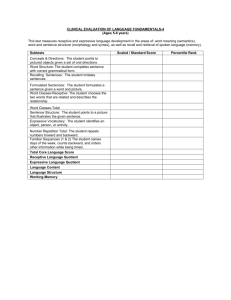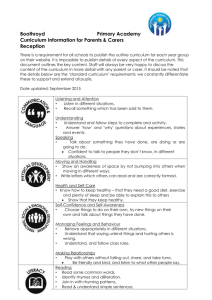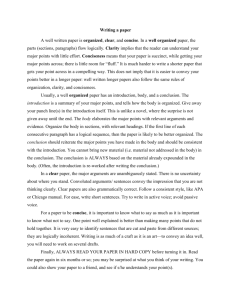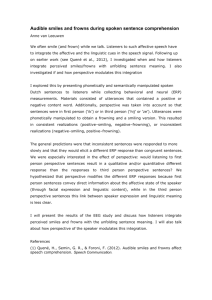Evaluation: Working with Words
advertisement
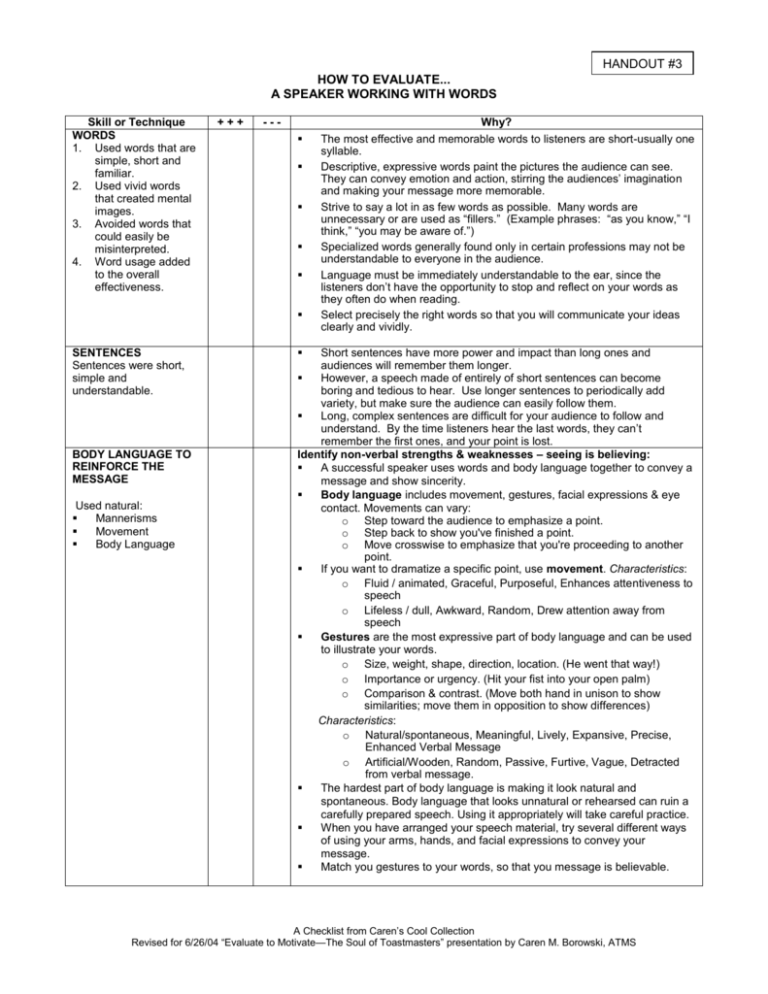
HANDOUT #3 HOW TO EVALUATE... A SPEAKER WORKING WITH WORDS Skill or Technique WORDS 1. Used words that are simple, short and familiar. 2. Used vivid words that created mental images. 3. Avoided words that could easily be misinterpreted. 4. Word usage added to the overall effectiveness. +++ -- SENTENCES Sentences were short, simple and understandable. BODY LANGUAGE TO REINFORCE THE MESSAGE Used natural: Mannerisms Movement Body Language Why? The most effective and memorable words to listeners are short-usually one syllable. Descriptive, expressive words paint the pictures the audience can see. They can convey emotion and action, stirring the audiences’ imagination and making your message more memorable. Strive to say a lot in as few words as possible. Many words are unnecessary or are used as “fillers.” (Example phrases: “as you know,” “I think,” “you may be aware of.”) Specialized words generally found only in certain professions may not be understandable to everyone in the audience. Language must be immediately understandable to the ear, since the listeners don’t have the opportunity to stop and reflect on your words as they often do when reading. Select precisely the right words so that you will communicate your ideas clearly and vividly. Short sentences have more power and impact than long ones and audiences will remember them longer. However, a speech made of entirely of short sentences can become boring and tedious to hear. Use longer sentences to periodically add variety, but make sure the audience can easily follow them. Long, complex sentences are difficult for your audience to follow and understand. By the time listeners hear the last words, they can’t remember the first ones, and your point is lost. Identify non-verbal strengths & weaknesses – seeing is believing: A successful speaker uses words and body language together to convey a message and show sincerity. Body language includes movement, gestures, facial expressions & eye contact. Movements can vary: o Step toward the audience to emphasize a point. o Step back to show you've finished a point. o Move crosswise to emphasize that you're proceeding to another point. If you want to dramatize a specific point, use movement. Characteristics: o Fluid / animated, Graceful, Purposeful, Enhances attentiveness to speech o Lifeless / dull, Awkward, Random, Drew attention away from speech Gestures are the most expressive part of body language and can be used to illustrate your words. o Size, weight, shape, direction, location. (He went that way!) o Importance or urgency. (Hit your fist into your open palm) o Comparison & contrast. (Move both hand in unison to show similarities; move them in opposition to show differences) Characteristics: o Natural/spontaneous, Meaningful, Lively, Expansive, Precise, Enhanced Verbal Message o Artificial/Wooden, Random, Passive, Furtive, Vague, Detracted from verbal message. The hardest part of body language is making it look natural and spontaneous. Body language that looks unnatural or rehearsed can ruin a carefully prepared speech. Using it appropriately will take careful practice. When you have arranged your speech material, try several different ways of using your arms, hands, and facial expressions to convey your message. Match you gestures to your words, so that you message is believable. A Checklist from Caren’s Cool Collection Revised for 6/26/04 “Evaluate to Motivate—The Soul of Toastmasters” presentation by Caren M. Borowski, ATMS




